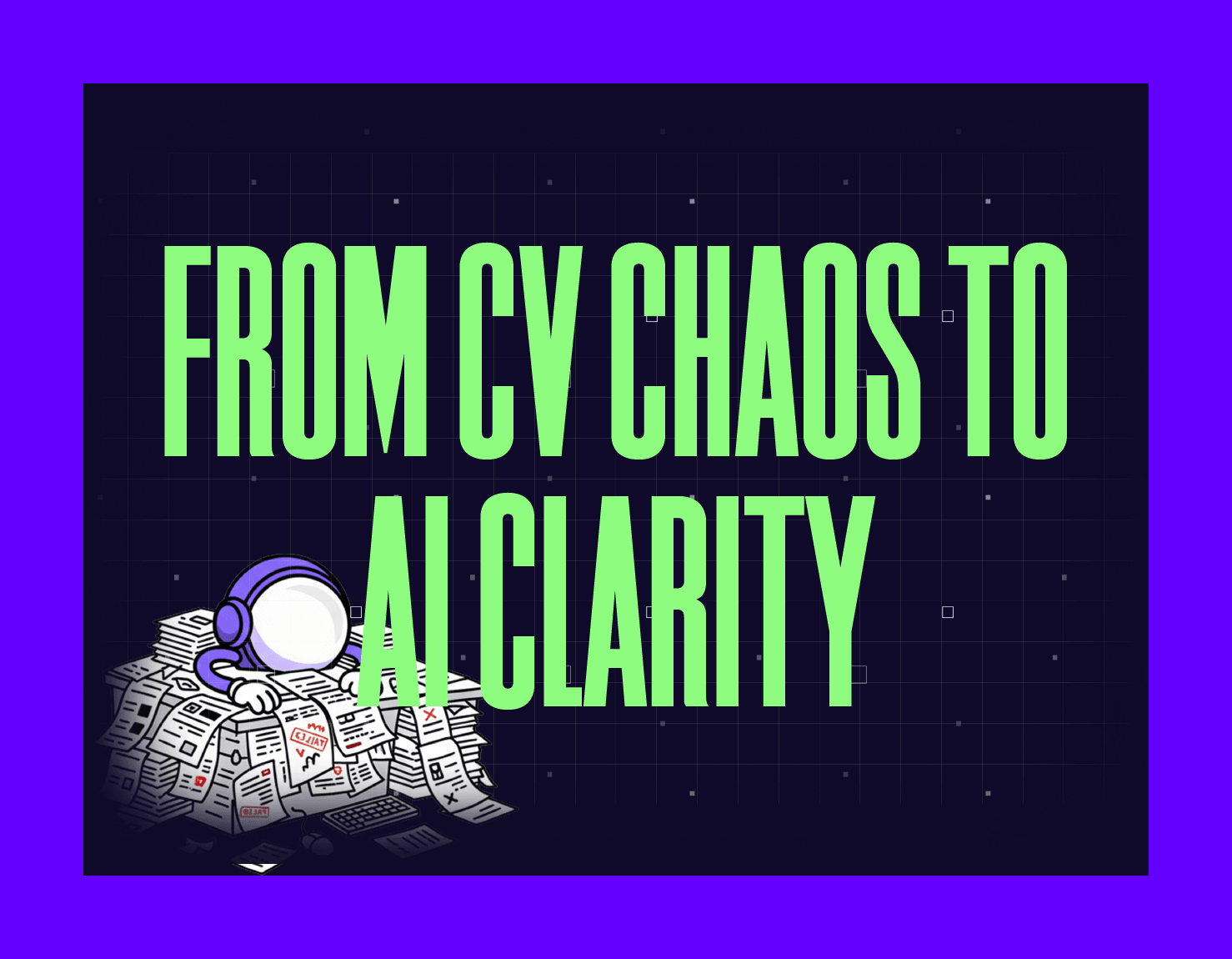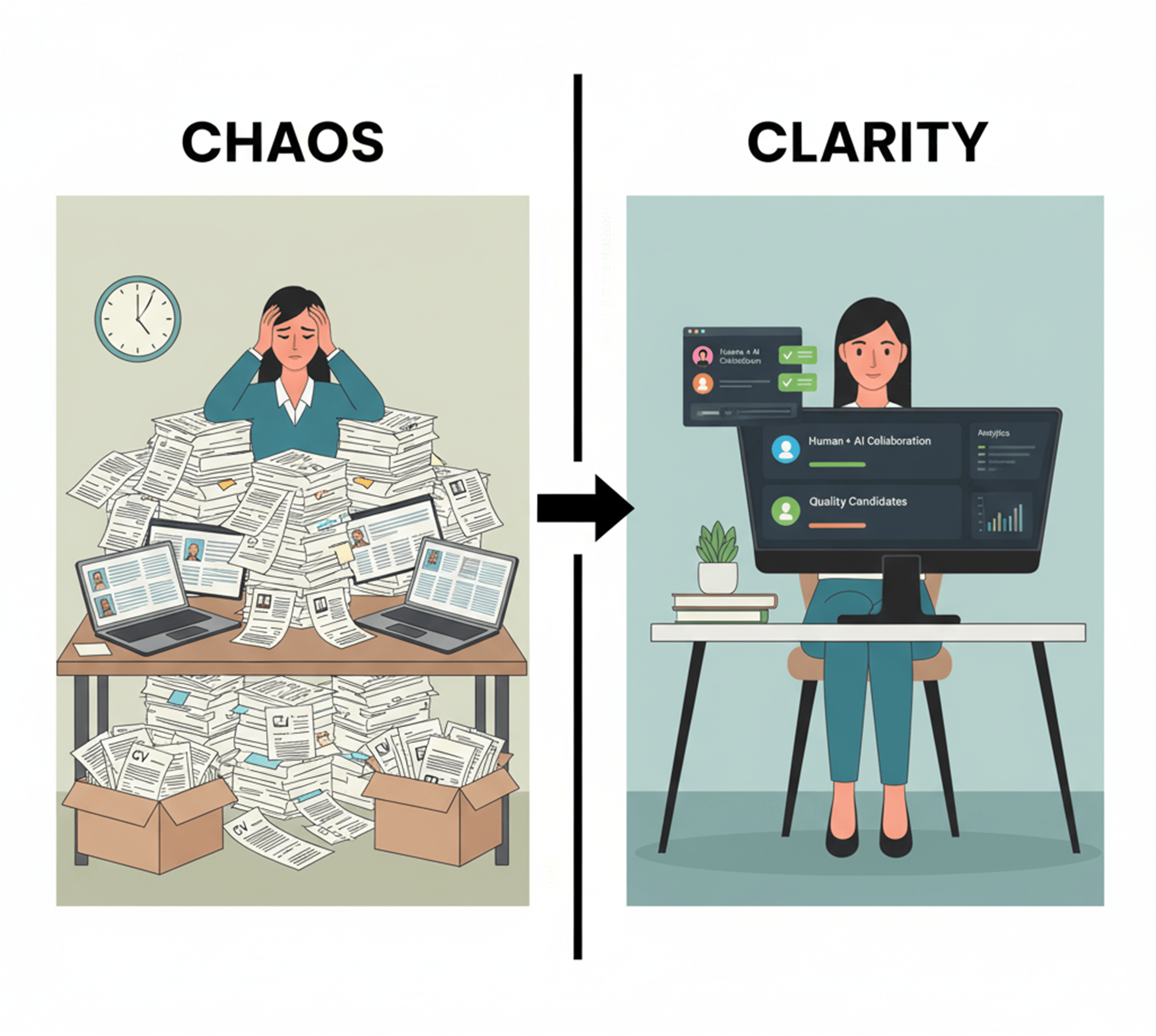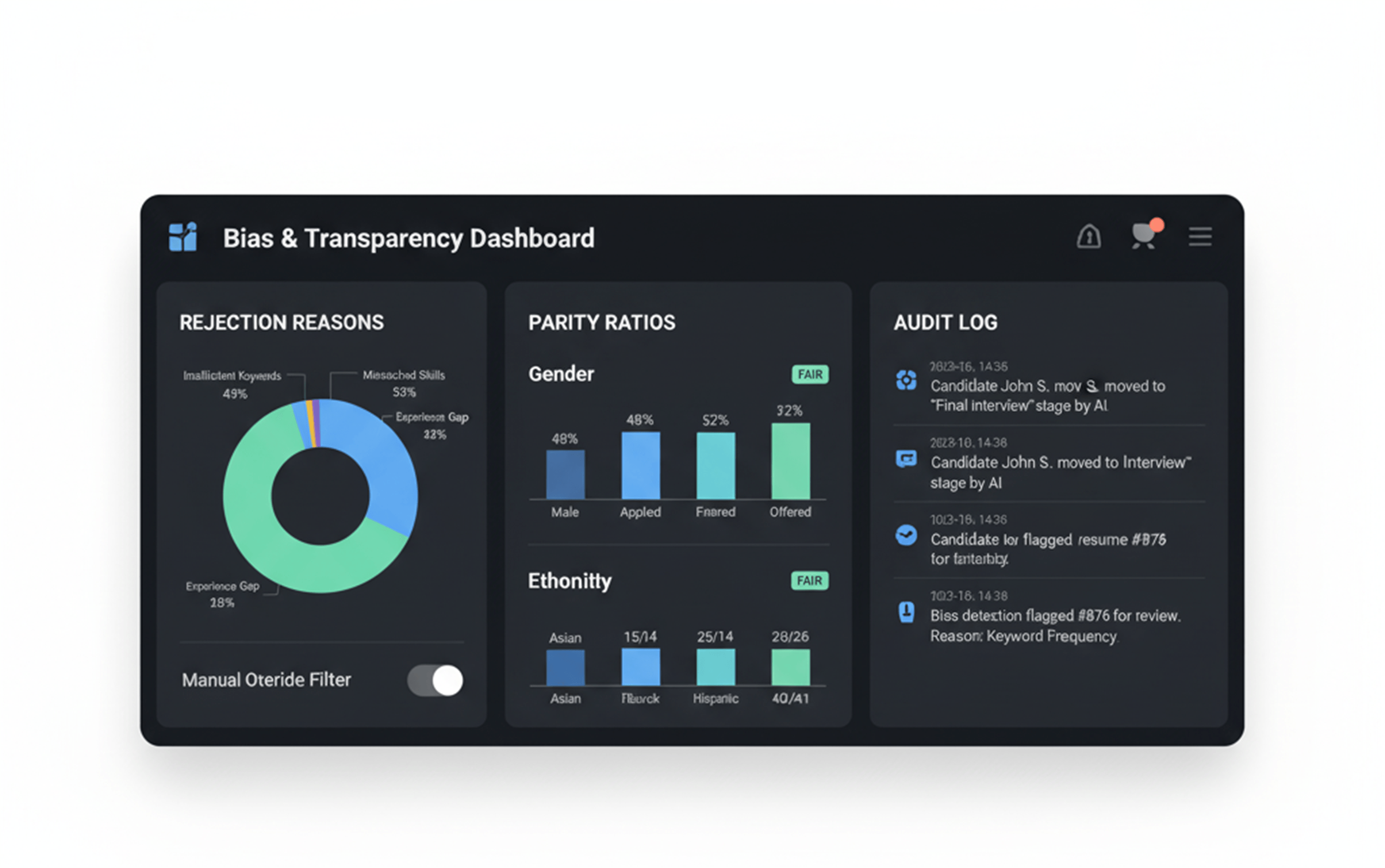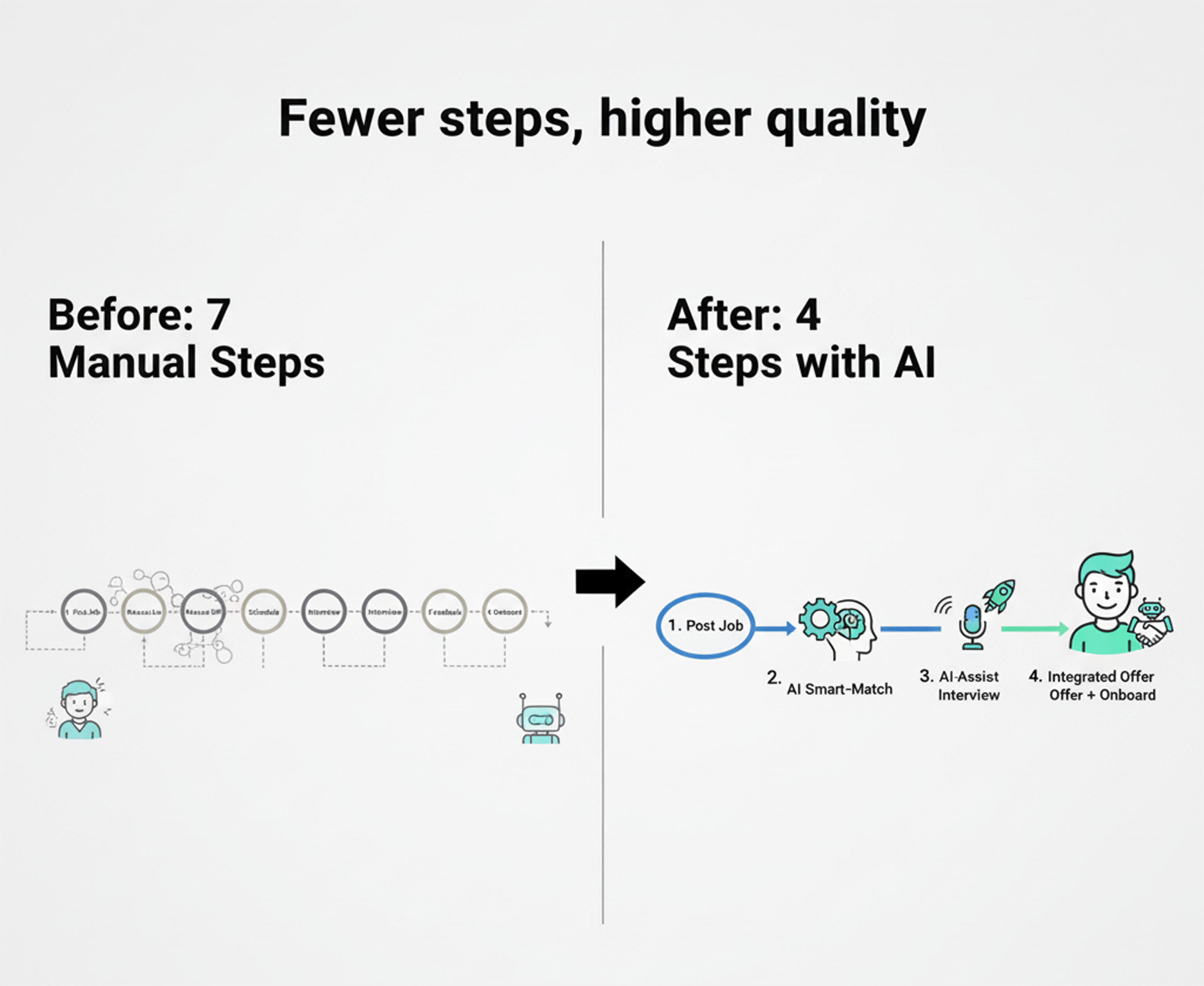Don’t Let AI in Recruitment Drown Out Talent

The Paradox of AI in Recruitment and Fair AI Hiring
When Automation Creates More Problems Than It Solves
Using AI in recruitment and talent acquisition sounds like the perfect solution: automatically sort based on predefined criteria, screen, and pick top candidates faster than any human recruiter could. In short, fair AI hiring and a balanced recruitment process promise speed, but the results depend on how well it is used.
The market for AI in recruitment is growing fast. Recent studies (opens in new tab) show it could reach about $1.35 billion in 2025, growing nearly 19% each year. It may pass $2.67 billion by 2029 as companies want smarter, faster hiring tools that mix AI power with human insights. This growth shows how quickly recruitment tech is changing, but there are still problems with fairness, transparency, and finding real talent.
But there's a problem only a few expect.
Job seekers now use AI tools and ChatGPT to build resumes full of keywords based on each job description. Meanwhile, recruiters use AI screening software to streamline filtering thousands of applications. This should work well, right? Instead, hiring managers are drowning in what experts call "AI sludge" - a pile of identical and generic applications.
In AI in recruitment workflows, a recruiter looking through 500 developer applications might find 300 with almost the same phrases. The algorithms flag these as strong matches because they have the right keywords. But those matches often miss real skills or creative work that make top candidates stand out. As a result, teams spend more time filtering out noise than finding talent.
A TechRound analysis (opens in new tab) explains this: automation improves speed but creates new problems. Recruiters spend longer trying to find authentic voices in a crowd of copies.
Why does this matter now? Recruiting is more competitive and happens faster. Automated tools often favor those who know how to game the system, not who have real creativity and potential. The result - fewer true connections, missed opportunities, and frustration for everyone.
This article explores AI in recruitment today - from keyword scanning to automated interview scheduling - and why it can both help and hurt. You’ll learn why generic applications flood the system, how companies can adjust without losing good candidates, and what methods help cut through the noise. The goal is to guide HR teams and job seekers through a tricky hiring world where automation fixes some things but causes others.

Smarter Recruiting Approaches
When AI Meets AI - The Resume Screening Paradox
AI promised to take the hard work out of recruitment - and it has, but only up to a point. AI can scan thousands of CVs in minutes and pick those with the right skills or keywords. But this speed has limits.
For example, a developer might show an unusual project style or highlight volunteer work instead of certificates. AI spots “Python” or “React” but misses the story behind the work. Things like creativity, culture fit, and grit often get lost.
Recent research shows job seekers feel stuck in a loop - using artificial intelligence to write resumes that other AI tools must read. The funny part? Both sides use smart tech but true talent gets lost.
Recruitment agencies won’t disappear soon. Instead, they’re shifting to focus on jobs where humans matter most, letting machines handle volume screening.
AI is changing HR by taking over repetitive tasks to streamline recruitment workflows. Chatbots can schedule interviews and answer common questions any time. But reading between the lines and judging true potential? That still requires a person.
Hybrid Approaches and Ethical Considerations
The best teams use both AI and human judgment. A recruiter might cut a list from 1,000 to 20 using AI, then review each personally for soft skills and uniqueness.
For example, companies like Unilever use (opens in new tab) AI for first rounds but always have human managers in final interviews. This way, talent acquisition is faster but still high-quality.
Ethical concerns around AI in recruitment are also growing, not only from tech experts but also regulators. AI learns biases if it trains on unfair or incomplete data.
There's also pressure for transparency as rules tighten worldwide. New laws, like the EU’s Artificial Intelligence Act, will make companies prove their AI tools are fair and explainable (The Economic Times (opens in new tab)). Companies need to show how their AI makes decisions, explain rejections, and regularly check for bias. These rules will change how recruitment tech works.
According to Oleeo’s report, demand for these combined human+AI solutions is growing. Spending on AI hiring tools could pass $1.35 billion in 2025, as companies look for smarter paths.
The takeaway: AI keeps improving, but success means balancing speed with care, and remembering what makes great hires special.

Finding the Right Path in AI Recruitment
Recruitment is at a turning point. Teams that invest in clear, flexible AI and human learning will lead the way. For job seekers, standing out is more than stuffing keywords, it’s about being real and creative.
Ethics and rules matter more than ever. They set new bars for fairness and trust. Winning teams will mix machine speed with human insight, not choose one over the other.
SHRM’s latest study (opens in new tab) shows 85% of employers use automation to filter candidates. But only those who combine smart tech with good judgment build lasting teams. The AI resume game shows hiring needs human judgment more than ever.

How We Can Help You Navigate AI Recruitment Challenges
AI hiring is growing fast, but it must mean real change, not just automation. At Mygom.tech, we build custom AI tools that mix speed, accuracy, and understanding. We create solutions from business intelligence (opens in new tab) to content creation (opens in new tab) and AI automation (opens in new tab). These tools are designed to streamline tough tasks and improve decision quality based on real skills, outcomes, and context, not just keywords, helping with challenges like generic resume filtering and fair AI hiring.
If you want to add artificial intelligence to your recruitment, we design systems that keep the human touch while making work easier. See our full portfolio (opens in new tab) to learn how smart AI can transform your recruiting.
Gabriele J.
Marketing Specialist


